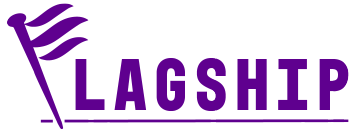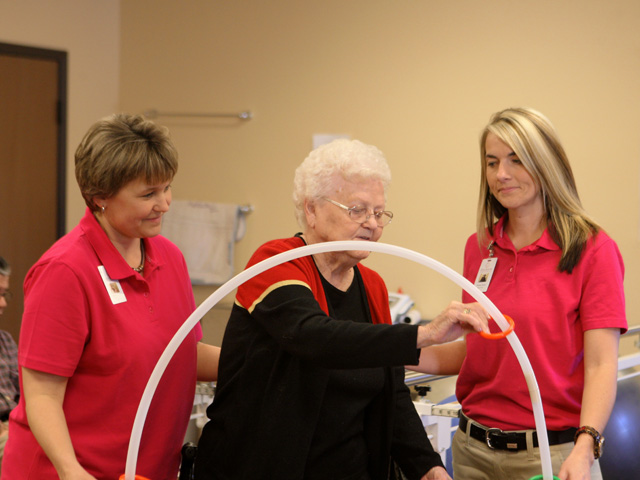Reprinted with permission from the Paris News, Paris, Texas, published April 13, 2014
By Lauren Corbell
Visitors walking through the doors of Stillhouse Nursing and Rehabilitation immediately notice there is something different about the facility. However, it isn’t the technology that makes Stillhouse different from other similar rehabilitation centers. It’s the people.
“Our equipment isn’t different from anybody else’s, though we’re planning to purchase some innovative equipment soon,” said Deb Lookingbill, occupational therapist and director of rehabilitation. “The difference is our team and our mindset. We truly care about patients’ wellbeing. We’re in it to get them well.”
Selina Louis, assistant director of nursing, agreed.
“We have a different way of thinking here and a different approach to care,” she said.
Two physical therapists, two therapist assistants, one occupational therapist, two occupational therapist assistants and a speech therapist comprise the cheerful rehabilitation team.

Physical therapist April Boles, left, and speech pathologist Brittany Brown, right, assist Ruth Morris as she slides rings across a shoulder arc that improves shoulder motion.
“All together, we have 70 years of experience,” Lookingbill said. “Some of our team members have worked together for 12 years, others for six. We are a family.”
Mike Reese, operations manager, tributes part of the facility’s success to the CAPLICO mission the employees follow.
“The C stands for ‘customer second,’” Reese said. “That sounds strange to people, but it emphasizes our belief that our employees’ skills and training allow us to provide the highest level of care.”
Each of the points in the code — accountability, passion, love one another, intelligent risk-taking, celebrate and ownership — contribute to the upbeat, family-like atmosphere that, employees said, helps patients recover quickly.
And, it seems to work.
Each of the staff members interviewed told of success stories. One woman came in on a stretcher having been told she would never walk again. Two months later, she was released, and recently she walked through the front doors to visit and say hello. Another woman had broken her hip three times, and each time, she chose to go back to Stillhouse for rehabilitation.
“It’s a testament to the service here,” Reese said. “There are plenty of options in the area, but our patients decide to come back to us.”
Patient Dr. Geoffrey Grubb said he had a stroke 17 years ago followed by another small one in December. After two months at the center, he was preparing to go home.
“I’m in better shape now than I was before the stroke,” said Grubb, who had already made arrangements to teach a Sunday school class at First United Methodist Church following his release.
Another patient, Michael Dollins, told how he had come to the facility unable to stand or walk, using a feeding tube and weighing 500 pounds. He now weighs 320 pounds and is able not just to take care of himself, but he also volunteers to help around the center, making coffee, washing dishes and folding towels. Employees gave him a staff shirt, which he wears with pride.

In his honorary staff shirt, patient Michael Dollins, front left, stands with the physical therapy team, including, front from left, Deb Lookingbill, Brittany Brown and Cara Duncan; back, Ruth Moseley, April Boles and Karina Smith.
“The patient has to put their effort into it,” Dollins said of physical therapy. “Everyone has to work together to make therapy and rehabilitation work. It takes encouragement to do your best.”
When patients are not in physical therapy sessions, the staff provides a number of activities to keep spirits high, including outings to antique car shows, restaurants and movies.
Cari Johnson, director of marketing, said one of the most popular events at the center is when the Good Ole Boys perform, which usually brings 50-60 people from the community to the facility to listen and dance.
Church services and Bible study are also available, along with a beauty shop and menu choices that include homemade dishes.
“We also emphasize communication,” Johnson said. “We give out our cell phone numbers, so there is always someone to contact 24/7.”
“We plan to continue to grow and improve,” said Reese. “We try to be the best resource for information on insurance, while providing emotional and educational support for patients and being a fun place for employees to work.”

Members of the Stillhouse Nursing and Rehabilitation staff are, front row, from left, Lisa Sillivan, Deb Spencer, Jennifer Thornton, Deb Lookingbill, Glenda Neisler, Connie Musick and Selina Lewis; back row, Rhonda Sisson, Danica Simmons, John Brazile, Michael Reese, Cari Fortenberry, Rocky Watley and Cari Johnson. Not pictured are LeAlandra Chandler and Charlotte Winton.
 For patients with excessive pannus, whereby the skin on the lower abdomen hangs down due to rapid weight loss, there are multiple complications that can arise. The condition increases the risk for excessive external hip rotation contracture, skin breakdown due to trapped moisture and decreased lower-extremity strength and range of motion.
For patients with excessive pannus, whereby the skin on the lower abdomen hangs down due to rapid weight loss, there are multiple complications that can arise. The condition increases the risk for excessive external hip rotation contracture, skin breakdown due to trapped moisture and decreased lower-extremity strength and range of motion.













